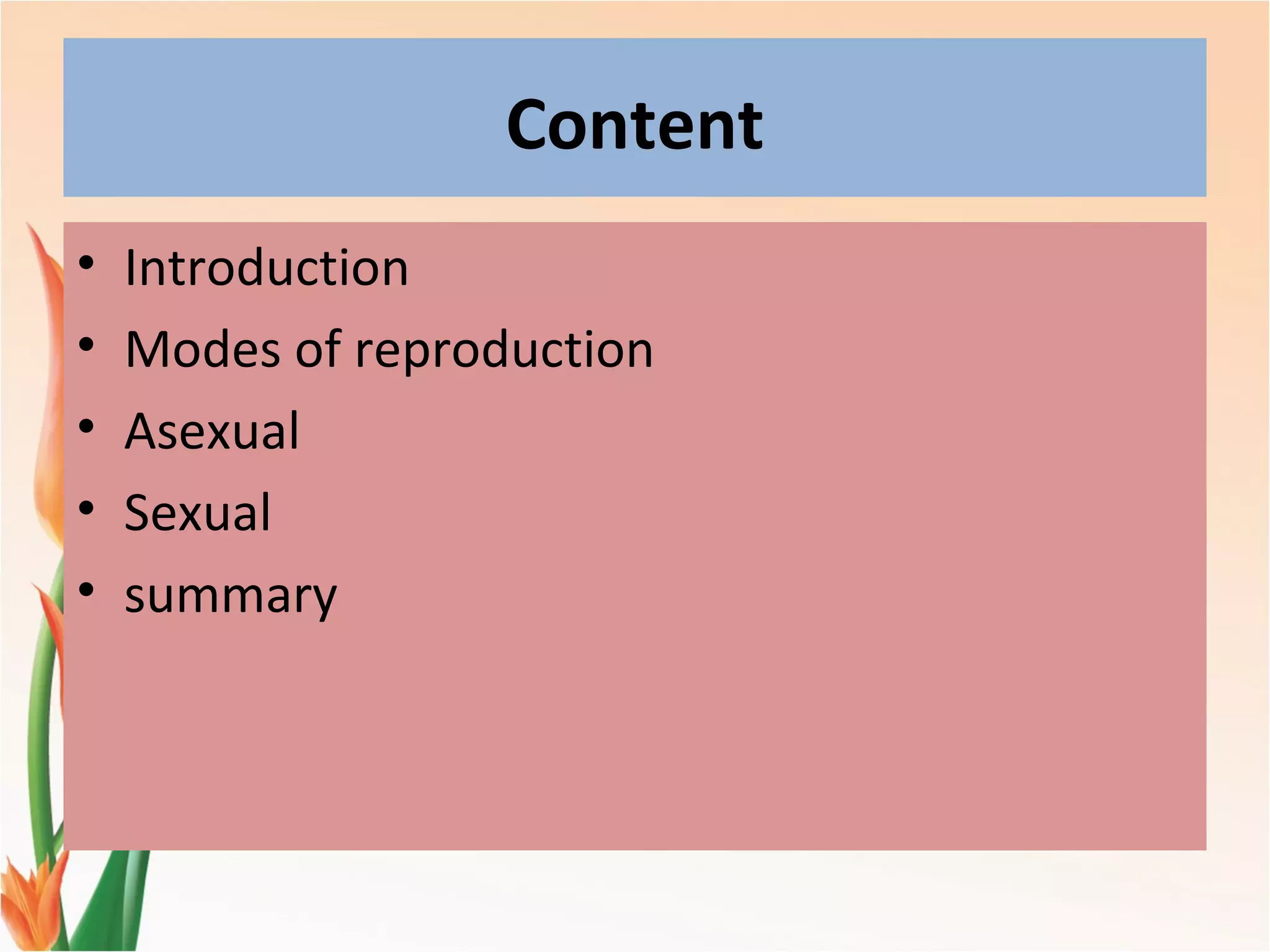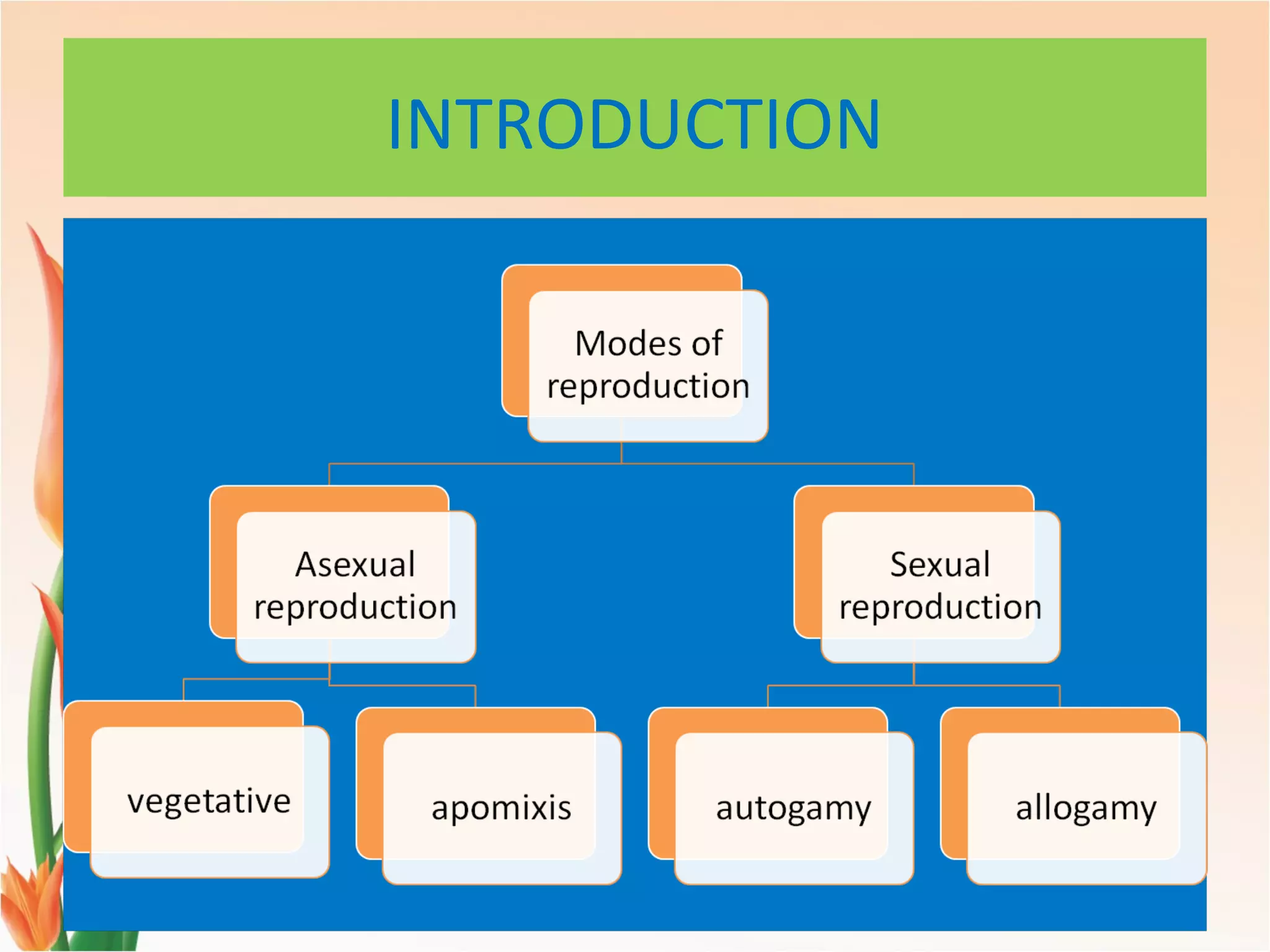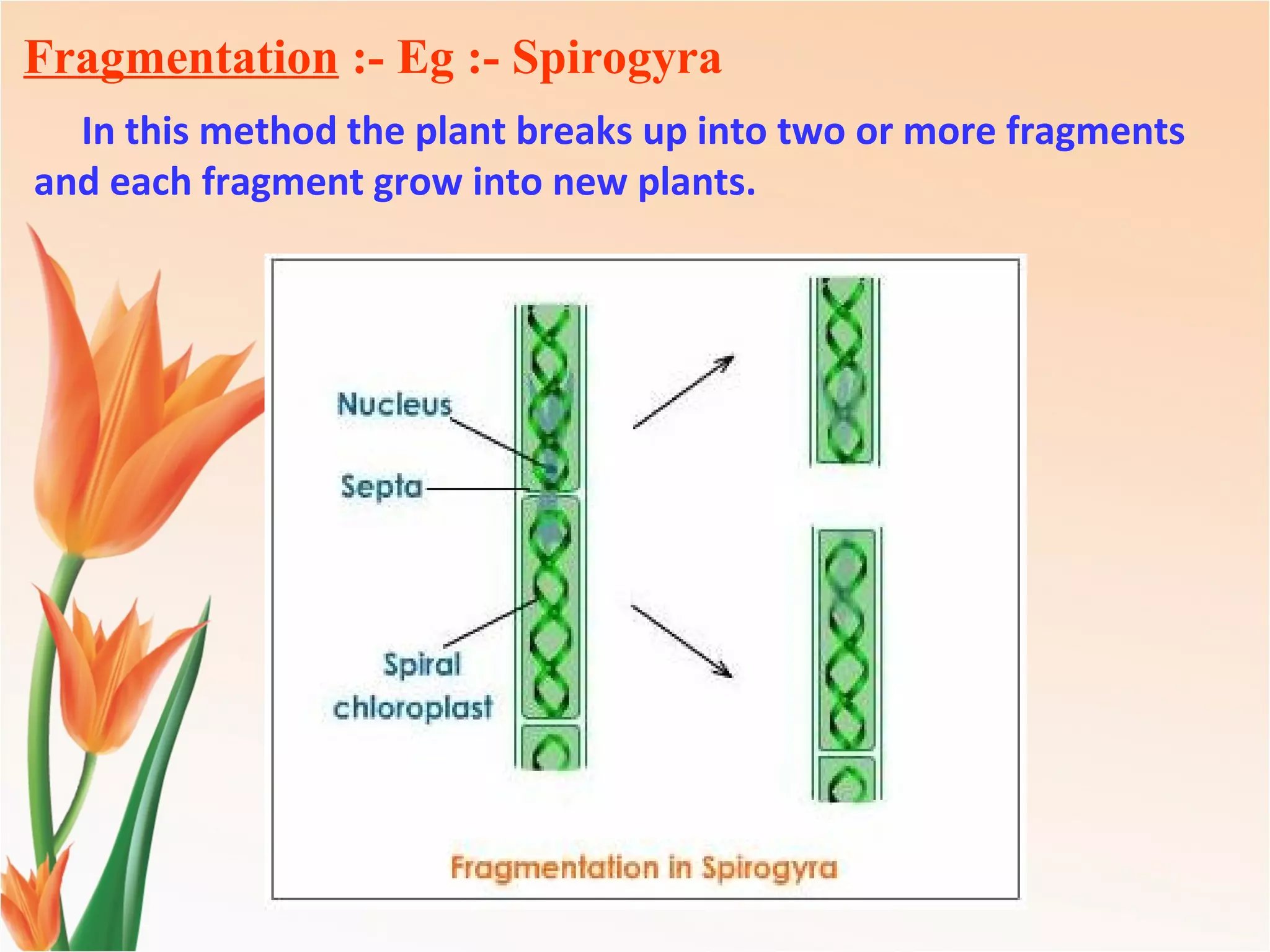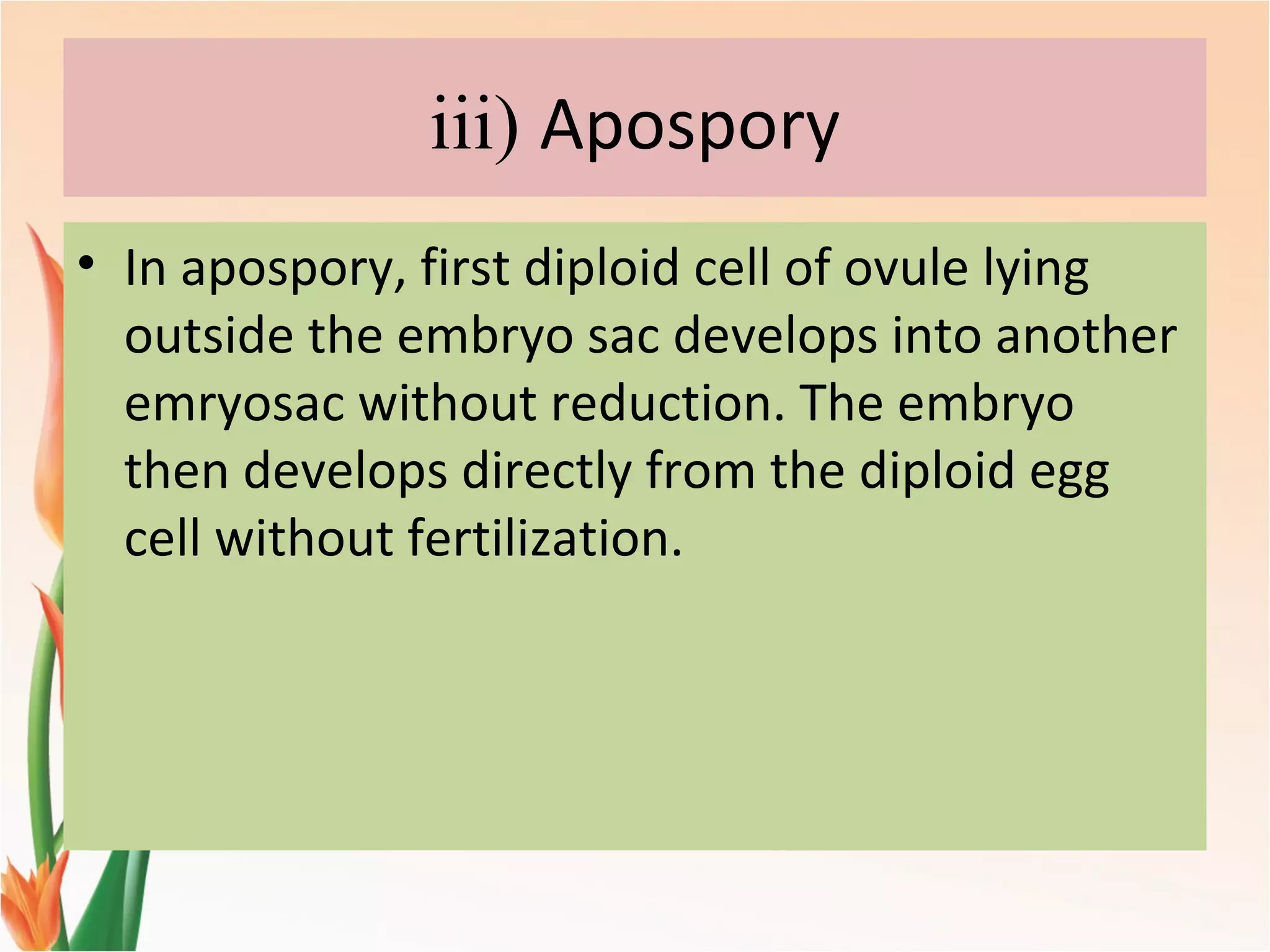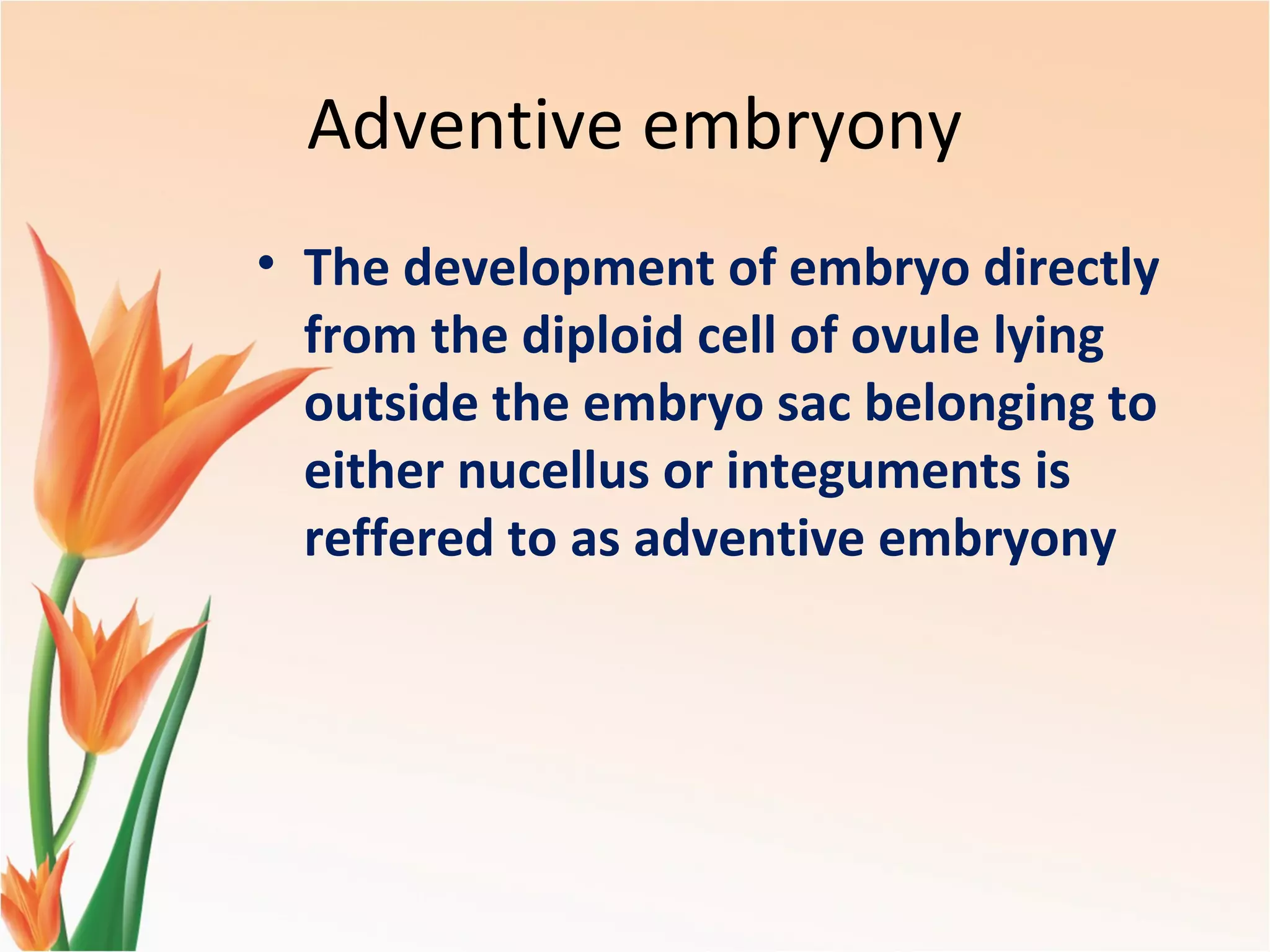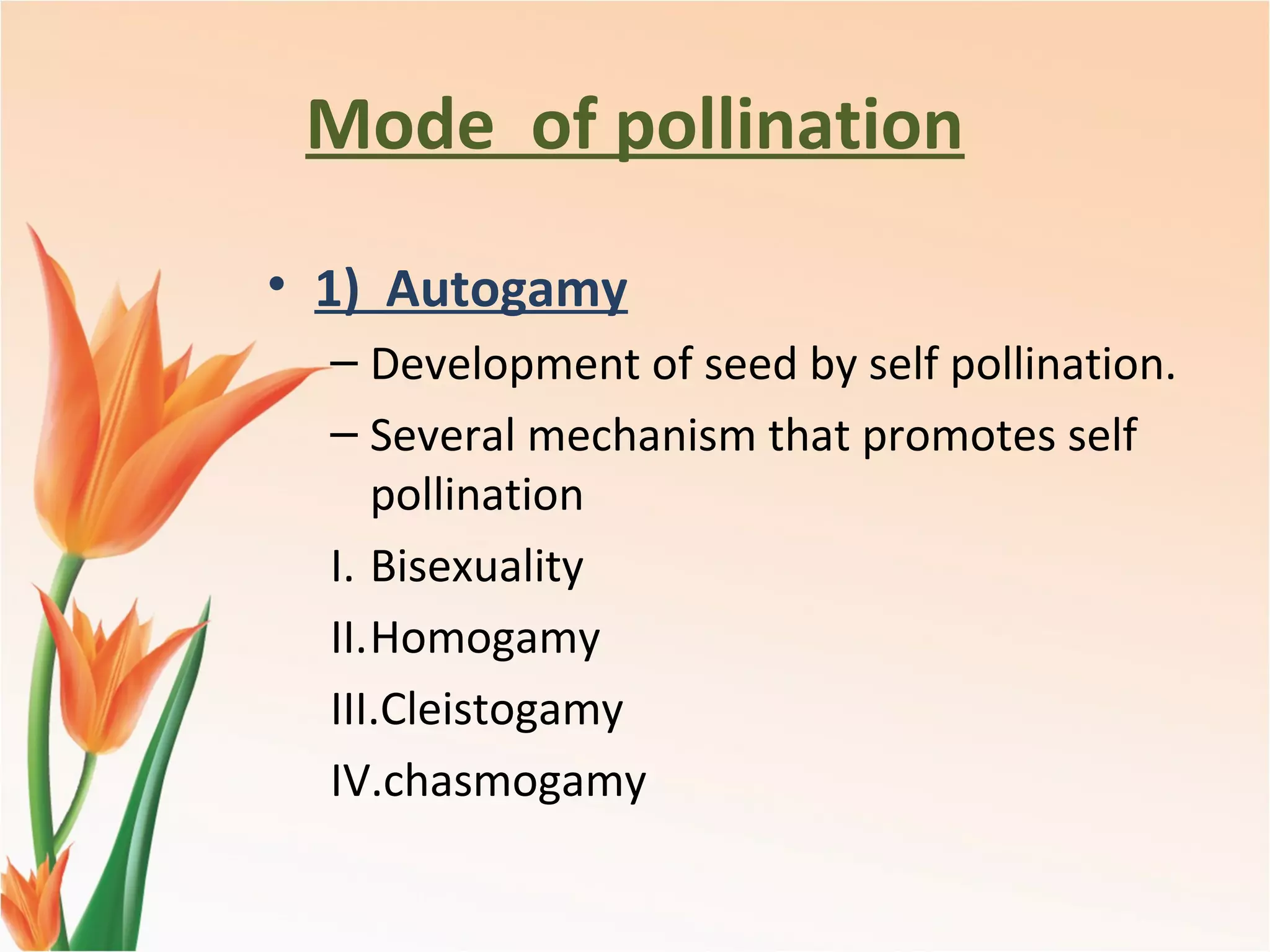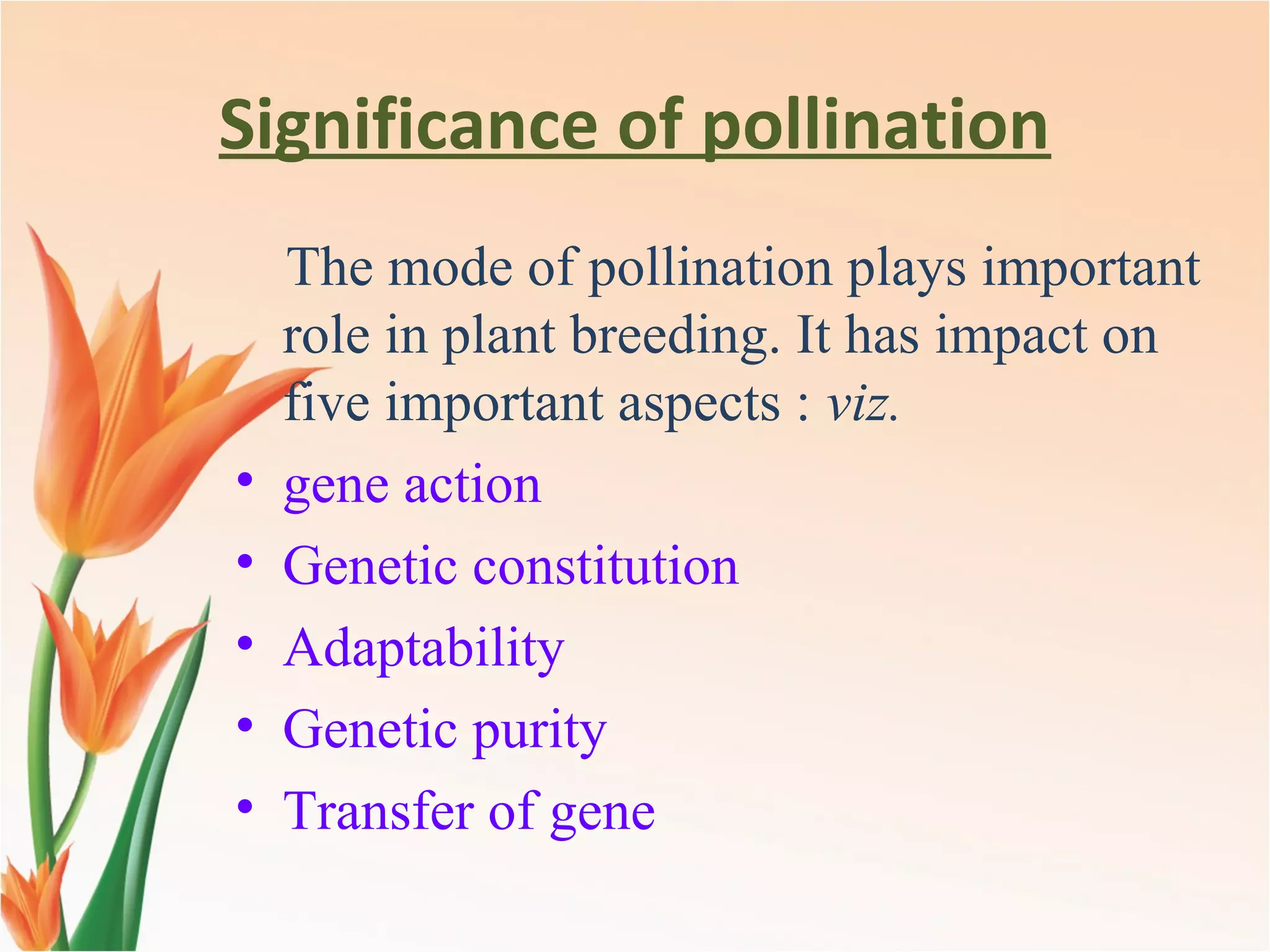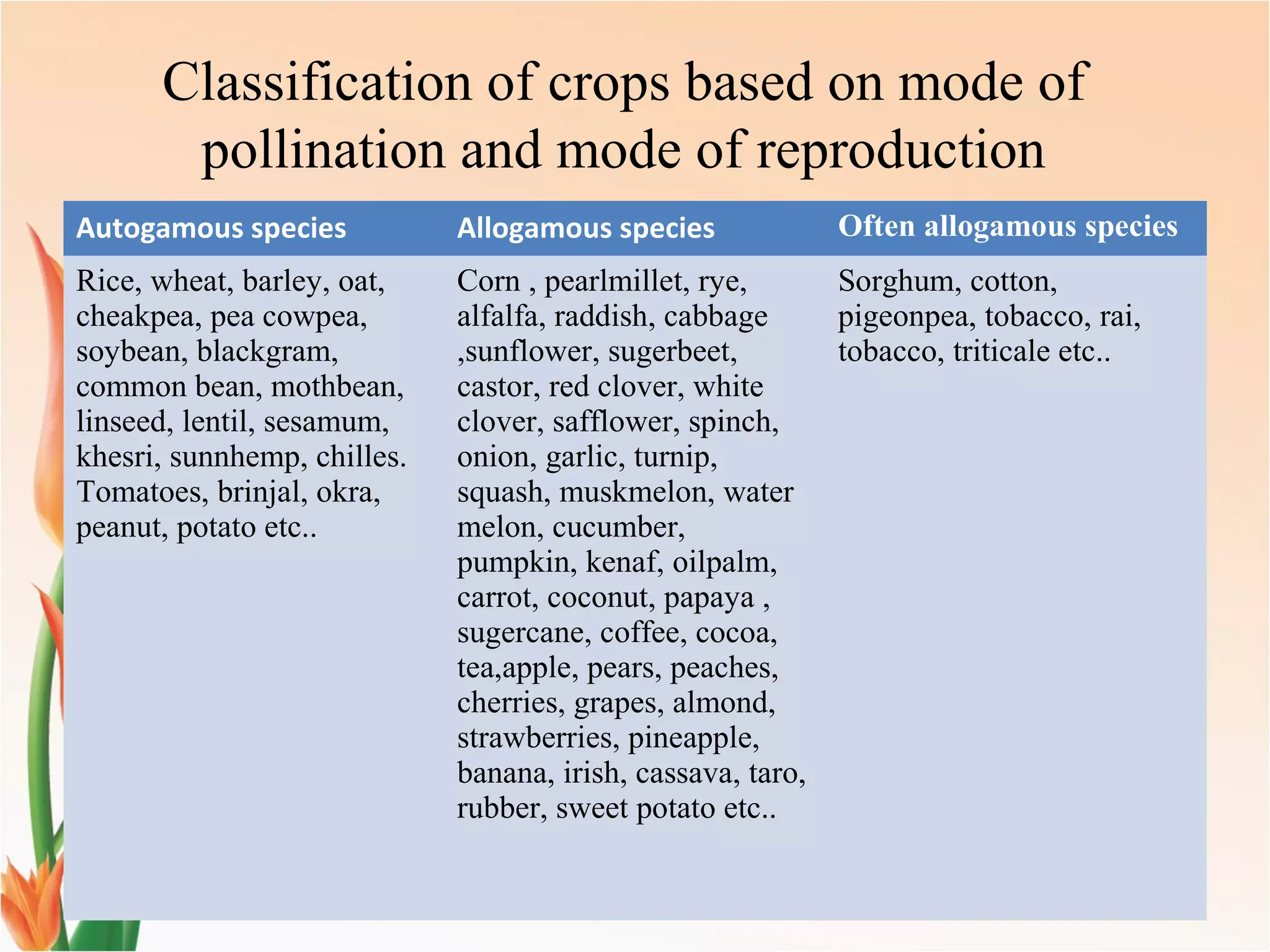1) Plants reproduce both asexually through vegetative propagation and sexually through the fusion of male and female gametes.
2) Asexual reproduction occurs through vegetative propagation using plant parts like stems and leaves, as well as spore formation. This allows for rapid reproduction but limited genetic variation.
3) Sexual reproduction involves pollination of flowers transferring pollen between male stamen and female pistil, followed by fertilization and seed production. This introduces greater genetic variation but requires more time and energy.

